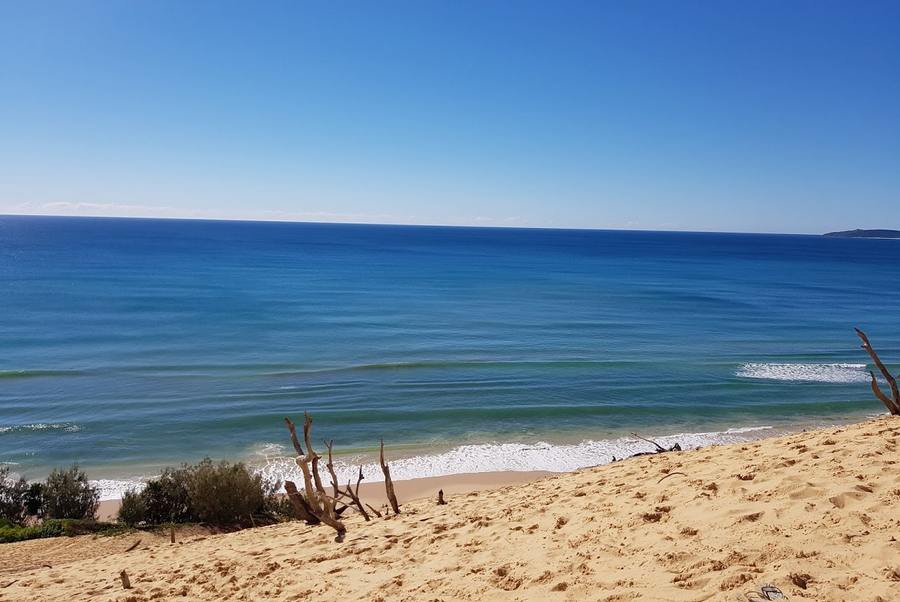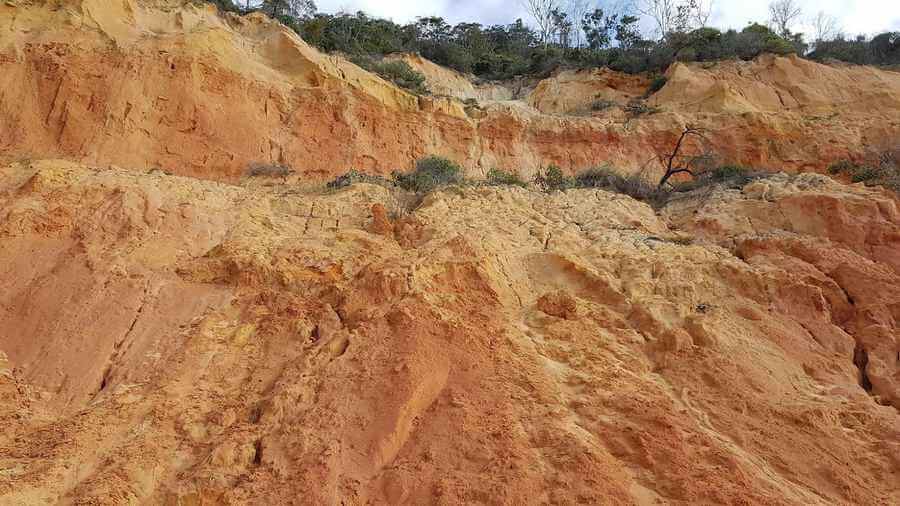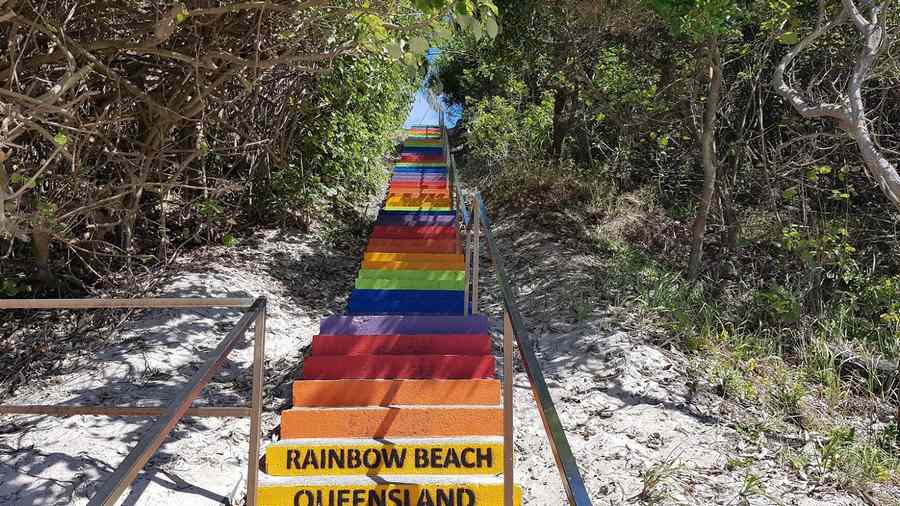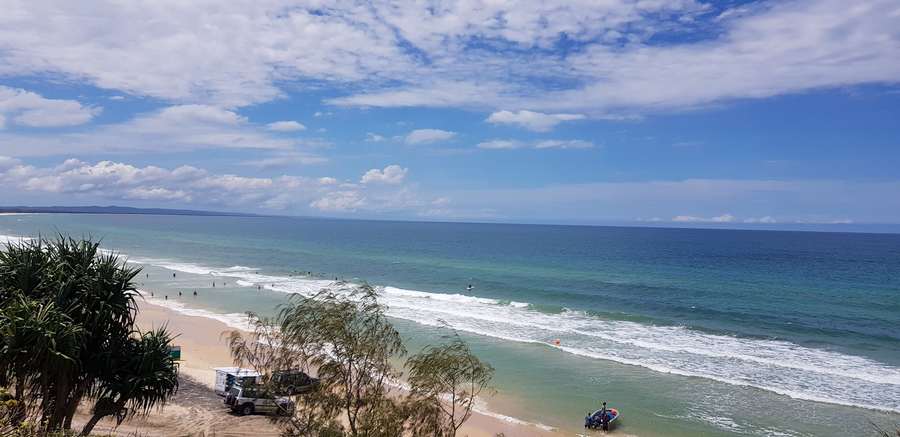Queensland, Australia is brimming with coastal towns and localities for guests to visit. The entire eastern coast of the state in Australia is truly amazing.
There are plenty of opportunities to see naturalistic areas of the coast including beaches, foreshore areas, and so much more. One of the most iconic places in Queensland is Rainbow Beach.
This small coastal town is specifically located in the southeastern part of Queensland in the region known as Gympie.
Moreover, Rainbow Beach is most known for its access to Fraser Island from Inskip Point.
The town is just off the southern tip of Fraser Island which lies right off the coast of Queensland and is mostly associated with the Hervey Bay area. But why is this town called Rainbow Beach in the first place?
Rainbow Beach is considered a rural coastal town as its estimated population is around 1,249. The reason behind why it is called “Rainbow Beach” is due to its beautiful coloured sands found on the beach. The Rainbow Beach coastline stretches an impressive 23km of soft multicoloured sands and ocean.
The entire beach isn’t full of coloured sands, just the southernmost part of the beach area.
The coloured sands are said to have between 40 and 72 different colours that all meld into gorgeous natural pieces of art. From burnt oranges to dark reddish colours and everything in between, the sand dunes on Rainbow Beach’s beach are truly mesmerising.
It is thought that the sand on this portion of the beach is derived from Pleistocene sand dunes which are part of a rock formation that outcrops the beach itself.
Beaches often get their sand from surrounding rock formations that have been broken down by constant exposure to the ocean waves.
This beach is no different and its unique appearance proves that the various rocks in the surrounding area are just as interesting as the beach itself.
Specifically, these rock formations contain iron oxide deposits which are said to contribute to the overall colours as well.
These coloured sand dunes are quite large in comparison to other sand dunes at other beaches. Some of Rainbow Beach’s sand dunes can reach up to 200 metres in height!
Even still, the best time to see all the various colours is at low tide when most of the dunes are exposed. Throughout many years of erosion, the sand dunes have been scaled back to reveal all the different colours that can be seen.
The coastal town that is encompassed by the large beach area gained the namesake of Rainbow Beach due to its proximity to the colourful sands of the beach.
The town and beach itself have proven to be quite a place to visit for tourists and residents of Australia alike.

When Did It Get Its Name?
The exact time frame as to when Rainbow Beach got its name isn’t precisely known. Although, it is suggested that the name could have also derived from an old legend stemming from the Aboriginal people of the area.
This would date back quite a way since the Aboriginal people are considered the first settlers in some parts of Australia.
The old legend suggests that the sand dunes were transformed into coloured dunes when a spirit known as Yiningie was killed in battle. The legend states the dunes were splashed with colour when the spirit colliding with the dunes.
Other sources have said that the area got its name somewhere in the late 1960s and early 1970s when sand mining in the area came to a halt.
Whether the name was given during a more ancient time or a more modern time, the name “Rainbow Beach” is certainly fitting with the wide array of colours on display.

What Is Rainbow Beach Like?
The town of Rainbow Beach is perfectly situated near the Cooloola National Park which is considered part of the Great Sandy National Park .
.
This area encompasses part of Fraser Island as well which is just north of Rainbow Beach.
The area boasts plenty of areas to explore including the national park, the beautiful beach, the lighthouse at Double Island Point, swimming and so much more.
Overall, the town and the beach are still reflective of quiet, tranquil areas that are found throughout Queensland. This makes Rainbow Beach ideal for fishermen, 4WD vehicle drivers, and those looking for a little slice of rural among other city areas.
Although, a rise in tourism to the area has brought more people to the area. This is primarily due to the beaut sands and the access from the Rainbow Beach area to Fraser Island, a popular tourist destination for those looking to witness the world’s largest sand island.
Aside from the beach and rural vibe, Rainbow Beach also offers a few walking track areas that are perfect for those looking to indulge in the natural landscape.
Whether it is up to Double Island Point lighthouse, a walk among the sand dunes, or the Carlo Sandblow, there is a lot of walking that can be done in the area.
The various places to walk gives Rainbow Beach visitors an opportunity to see more than just the coloured sands! You can also visit Seary’s Creek it offers freshwater swimming and a small waterfall.

Do Locals Call It Another Name?
Locals certainly love their smaller, rural coastal town in Queensland. It is the pinnacle of beauty with its unique beach and surrounding areas.
However, do the locals call it by another name? Before it was officially known as “Rainbow Beach”, it was called “Back Beach“.
The origins of this name aren’t quite clear but “Rainbow Beach” is much more fitting.
Even though the coloured sand dunes aren’t exactly like an actual rainbow, the name implies an “array of colours” among the sand dunes.
Some locals might still refer to the area as Back Beach although most of them tend to prefer the more upgraded name to the area. The new name better reflects the characteristics of the beach and town.
No matter what this iconic town and its beach are called, one thing is for sure, Rainbow Beach is an idyllic place to visit for its sands and the various gorgeous surroundings!
More Pages On Other Areas
Vacations are fun and can be a wonderful way for couples to spend quality time together. As a couple spends time together, they create memories to cherish forever. However, one question often arises:...
Recreational fishing in many parts of Victoria requires a licence that enables you to have fun while legally carrying out your non-commercial fishing activities. However, there's often a lot of...


